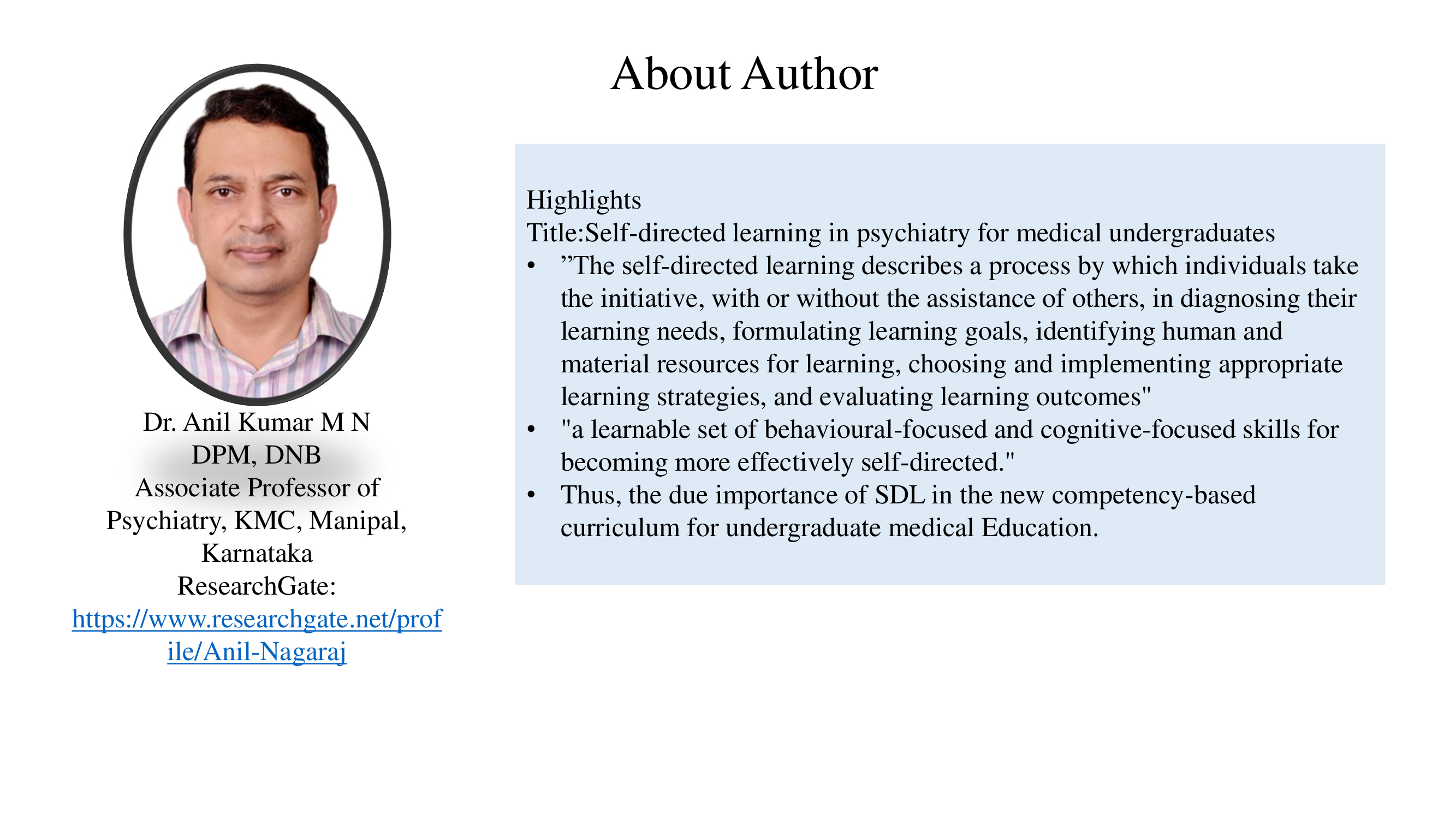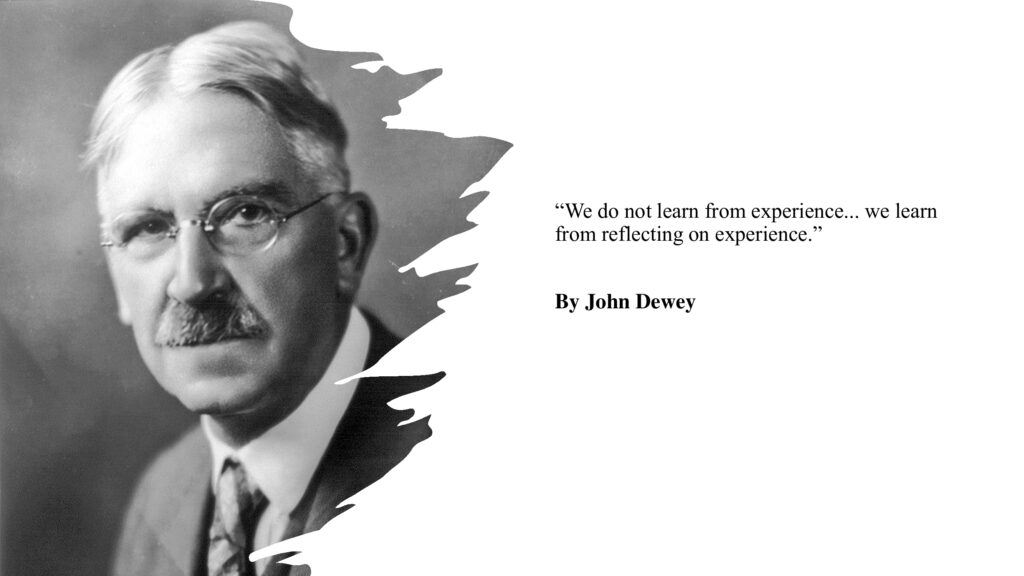Dr Anil Kumar M N
Volume 12 Issue 5 May, 2022

The CBME has emphasized Self-directed learning (SDL).
SDL is a multi-faceted approach and hence poses difficulty when we try to define it. The concept was first explained for adult education by John Dewey, an American philosopher and educational reformer, in 1913, and it was pioneered by Malcolm Knowles, an American adult educationist, in 1975. His definition appears to be the most comprehensive and most accepted so far. He states that “the self-directed learning describes a process by which individuals take the initiative, with or without the assistance of others, in diagnosing their learning needs, formulating learning goals, identifying human and material resources for learning, choosing and implementing appropriate learning strategies, and evaluating learning outcomes”. In simple terms, the student takes up the responsibility of deciding what to learn, what method to use, and how much to read, for a conceptual understanding, with minimal assistance from the teacher.
SDL is not an innate ability or ‘God’s gift’. Any adult can master the method. What is essential is to learn “how to learn?”. The teacher can facilitate this ‘learn to learn’ process. Textbooks are the key and authentic information sources. However, not all knowledge can be grasped through books. A video can better understand the techniques of a procedure or interview skills. Also, some information can be better understood by audio than by text. A role play can better perceive how to provide awareness or education about the illness to the patients or their families. Further, the patient’s perspective of problems like the inability to quit alcohol can be better understood by a home visit, observing his family dynamics, than by seeing the patient in a hospital. The student can obtain initial guidance regarding appropriate methods from their teacher.
There are several advantages of self-directed learning, as follows-

- There is convincing evidence that people who take the initiative in education learn more and learn better than passively being taught.
- Self-directed learners are better motivated
- They tend to apply knowledge in daily life to a greater extent
- SDL promotes lifelong learning, which is essential to doctors.
- The greater the capacity for becoming a self-directing person is, the more tendency there is to be a mature person.
According to Malcolm Knowles, the self-directed learner is expected to possess the following competencies
- The ability to enter into a close, respectful, learning-friendly relationship with learners.
- The ability to establish an environment which is physically and psychologically comfortable, open to interaction, based on cooperation, open and secure.
- The ability to take responsibility for determining one’s own learning needs.
- The ability to set goals.
- The ability to plan, implement and evaluate learning activities.
- The ability to help learners to self-direct their learning.
- The ability to be a facilitator and a source.
- The ability to effectively use small group processes
- The ability to evaluate learning processes and outcomes
Another pioneer of SDL, Manz, states that the students can be successful in self-directed learning by developing self-leadership. Self-leadership is “a learnable set of behavioural-focused and cognitive-focused skills for becoming more effectively self-directed.”
However, the SDL cannot be considered an exclusive method of learning. It can be complementary to teacher-directed learning. Without supervision, the teaching can be erroneous and hence repercussions patients. Further, today’s extensive access to information is overwhelming and may lead to problems of information overload, this lack of focus in learning if not adequately supervised. All in all, the field of higher education requires a transformation from the traditional role of the educator (teacher) into the educator as a facilitator of learning, driven by technological and societal changes. Thus the due importance of SDL in the new competency-based curriculum for undergraduate medical Education.


Very good method of learning, need based learning (may be for each patient), enhances motivation to learn, etc.